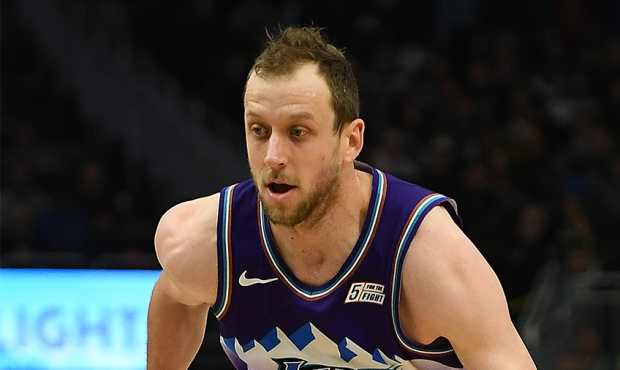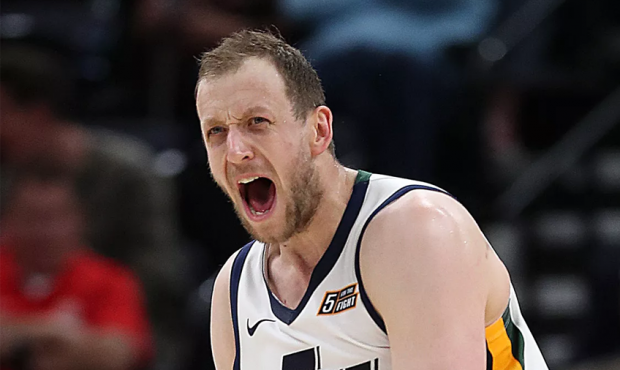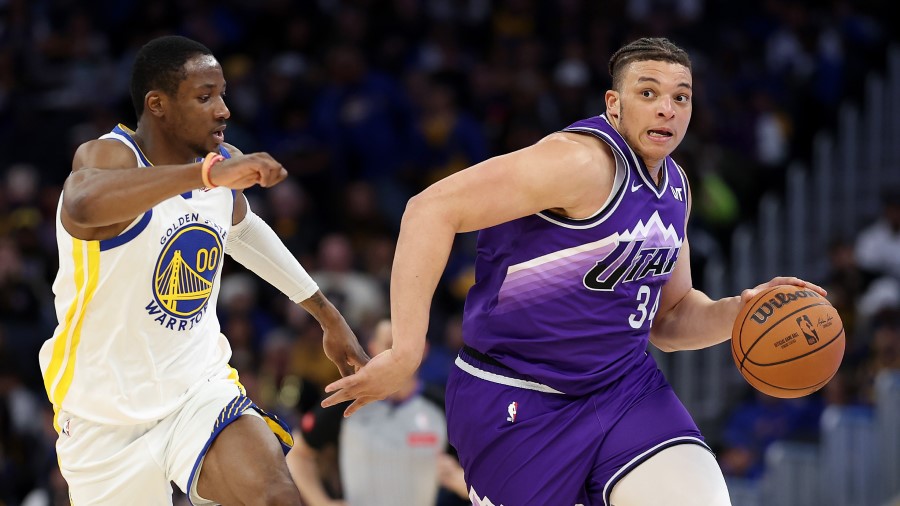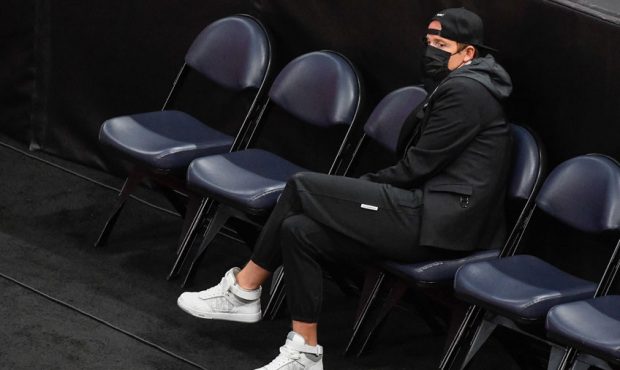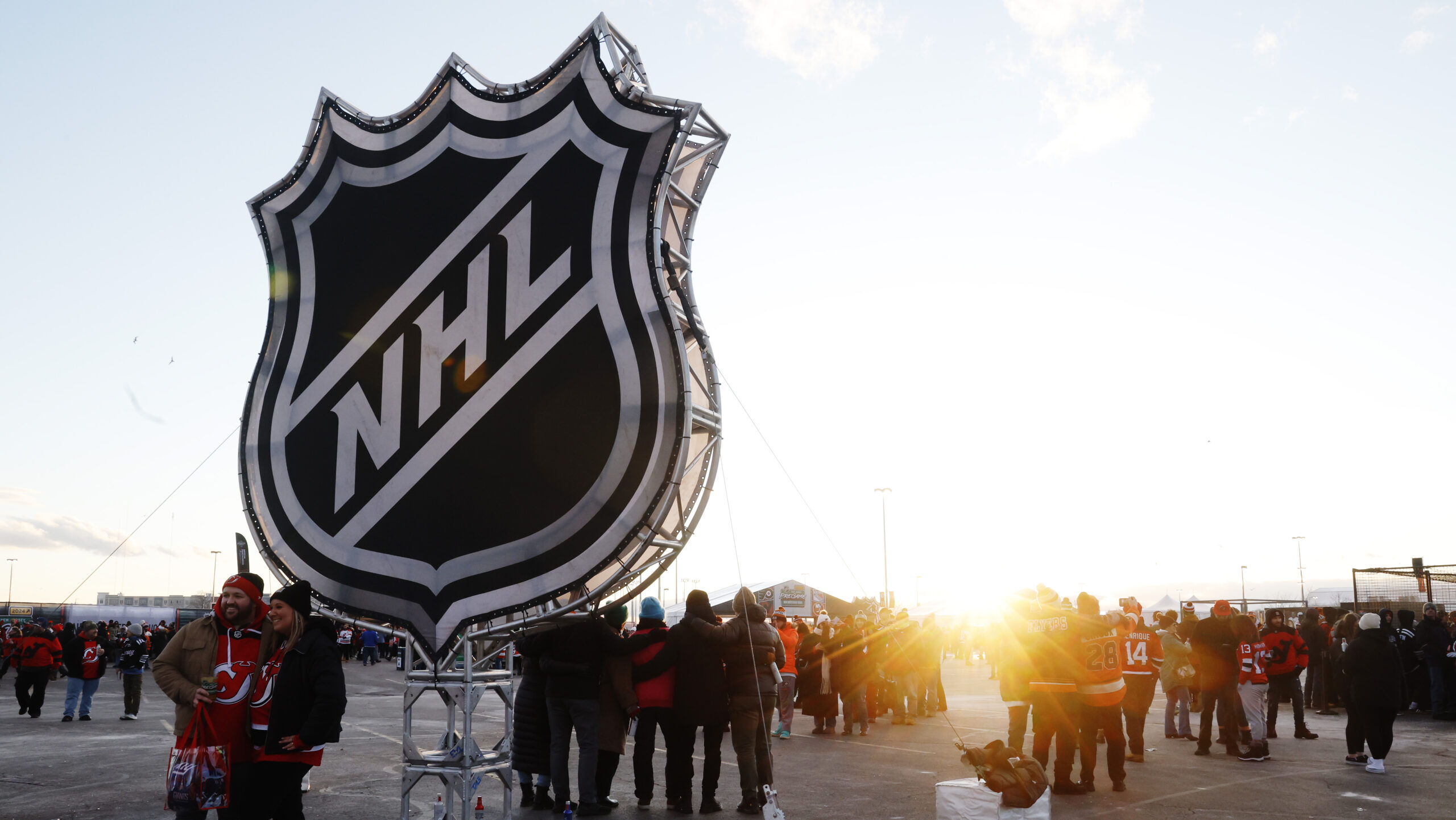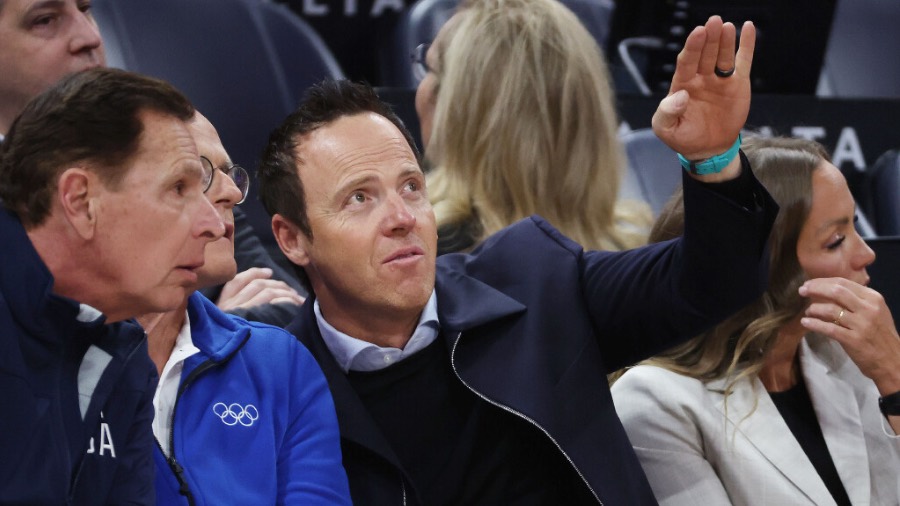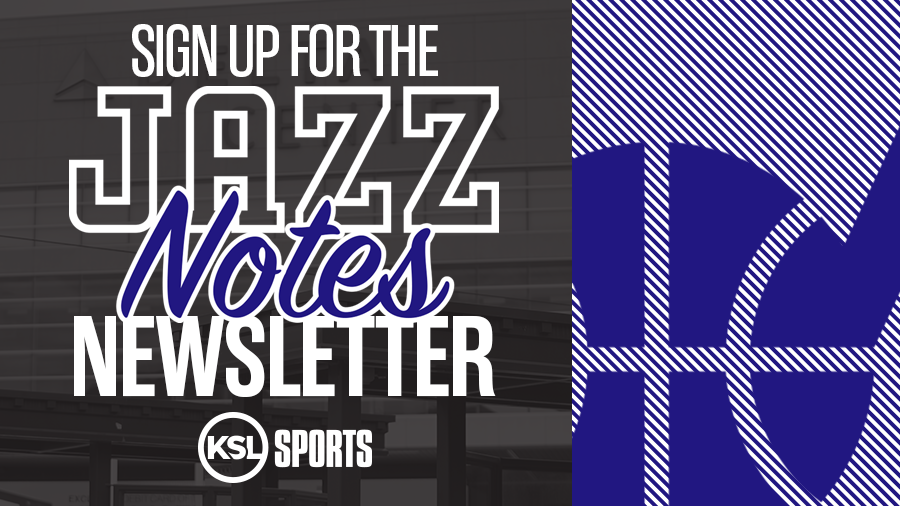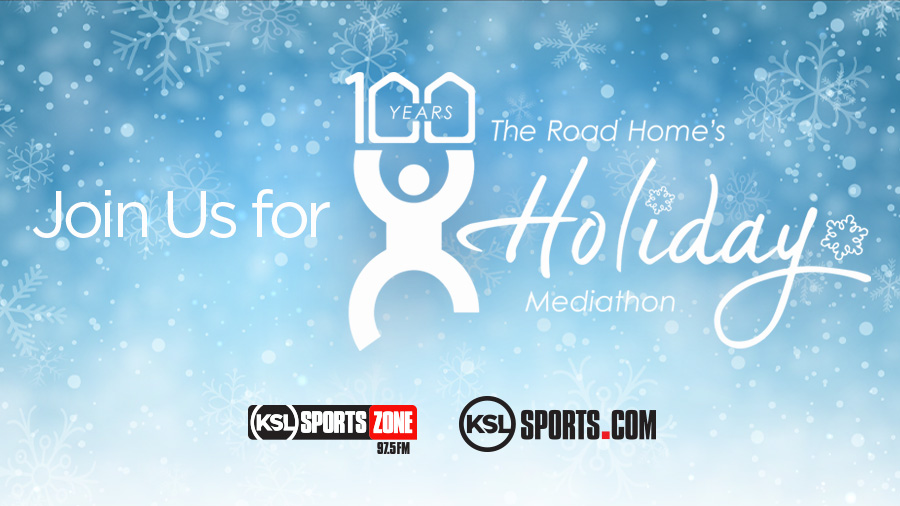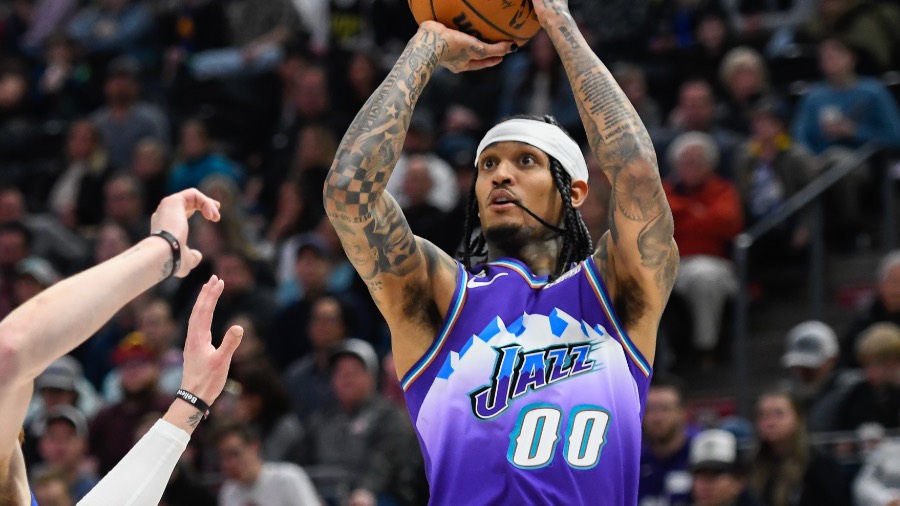Jazz Working To Get Ingles Offense Jumpstarted
Dec 8, 2019, 4:22 PM | Updated: 4:45 pm
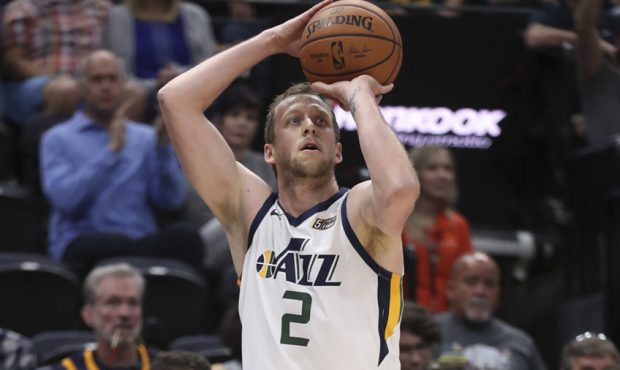
Utah Jazz forward Joe Ingles (2) fires a 3-pointer during the Toronto Raptors versus Utah Jazz preseason NBA basketball game at Vivint Arena in Salt Lake City on Tuesday, Oct. 2, 2018. (Steve Griffin, Deseret News)
(Steve Griffin, Deseret News)
SALT LAKE CITY, Utah – Joe Ingles has struggled through one of the rougher stretches of his NBA career this season. Through 23 games, Ingles is shooting career-worst percentages from the floor and the three-point line and has seen his points per game average drop nearly five points from last season, falling from 12.1 to 7.4 early in the season.
Ingles struggles have coincided with his move from the starting line-up with the Jazz over the last two seasons back to the bench, where he played for the majority of his first three seasons in the NBA.
Entering the season, occupying the role of sixth-man seemed like an ideal situation for Ingles and the Jazz, pairing the veteran with a natural feel for Quin Snyder’s offense with two veterans in Ed Davis and Jeff Green who are unfamiliar with the system, and young guards Dante Exum and Emmanuel Mudiay who are unproven playmakers early in their careers. However, it was quickly apparent that the move to the bench wasn’t going to be as smooth as many had predicted.
.@utahjazz coach Quin Snyder was asked about Joe Ingles adjusting to role coming off the bench. He said the whole team is adjusting. #TakeNote pic.twitter.com/k2PUFA2nHH
— KSL Sports (@kslsports) November 24, 2019
After consecutive seasons averaging double-digit scoring, Ingles failed to reach the 10 point mark until the fifth game of the season. The Australian forward’s shot attempts have dropped from nearly 10 attempts per game last season to just under seven attempts per game early in the season.
Where it seemed like his opportunity as a scorer and playmaker would increase, Ingles averages were dropping in both categories.
The secondary playmaker’s assists have also dipped from 5.7 per game last season to just 3.9 through the first quarter of the year.
So where have the problems come from?
Cold Shooting
The first and most obvious problem has been Ingles cold-shooting start to the season. On field goal attempts in which Ingles is considered open, meaning his closest defender is 4-6 feet away from him, Ingles shooting percentage has dropped from 43 percent last season to just 39 percent this season.
On shots when Ingles is considered wide open, meaning his nearest defender is more than six feet away, Ingles percentage has dropped from 42 percent to 35 percent. With a defender 4-6 feet away on three-point shots, Ingles percentage has dropped from 38 percent to 33 percent, while wide-open threes have dropped from nearly 42 percent to 35 percent.
Simply put, Ingles just isn’t shooting as well as he did last season. When open, or wide open, inside or outside the three-point line, Ingles percentages are down across the board from last season. Regardless of who he is playing with, Ingles isn’t making open shots as frequently as he did last season, and that’s largely responsible for the sixth year veteran’s slow start.
However, Ingles isn’t solely to blame for the drop in his percentages.
On wide-open shots, Ingles is seeing fewer opportunities than he had last season. As a starter, 40 percent of all of Ingles shots were considered wide open, while 38 percent of his three-point attempts were considered wide-open.
This season, those numbers have fallen to 35 percent on all shots, and 32 percent beyond the three-point line. Those numbers are likely a result of moving to the bench and being paired with players who both fail to draw defenders further away from Ingles for open looks or fail to find Ingles as frequently on shots that would be open.
As a unit, the bench has struggled to move the ball with the same frequency Quin Snyder’s offense has traditionally displayed.
Teammates are also likely factoring into Ingles low assist numbers.
New Role
Throughout his career, Ingles has paired with either Rudy Gober or Derrick Favors as a screen setter in the pick and roll game. With either player, Ingles has proven to be a worthy initiator of the offense be it in the starting lineup with Gobert or running the second unit with Favors.
I have a giant question mark around the limitations of Utah offensively in the playoffs but to their credit they just keep going until they find something. Dead play until Favors flashes, DHO's with Ingles, open side roll so when Faried shows there's no help. pic.twitter.com/CqoyNVrzlm
— Steve Jones Jr. (@stevejones20) April 17, 2019
This season, Ingles has been teamed with reserve bigs Ed Davis, Jeff Green, and Tony Bradley, none of whom are as adept setting screens or rolling to the rim as Gobert or Favors, changing the opportunity Ingles has to rack up assists or find shots out of the simple playset.
Ingles is also getting fewer shot attempts at the rim as a result.
The percentage of shots Ingles is taking within three feet has fallen from 19 percent of his shot attempts last season to just 14 percent this season. Despite the drop in attempts, his efficiency on those shots has climbed, connecting on 72 percent of his shots within three feet, up from 66 percent last season.
Recently, Snyder appears to be attempting to find minutes to pair Ingles and Gobert, and the results are promising. Against Philadelphia, Ingles racked up eight assists, including seven in the second half playing alongside Gobert. Against Memphis, Ingles recorded a season-high 10 assists, four of which were delivered to Gobert.
Joe with his 10th assist#TakeNote pic.twitter.com/GUBkTecE5U
— Utah Jazz (@utahjazz) December 8, 2019
After Saturday’s win, Snyder commented on the pairing.
“Rudy, Donovan [Mitchell] and Joe, those guys have really put a premium on being connected in pick and roll,” Snyder said, “With Joe, he uses the screen and he’s making good reads after the screen, and Rudy is making good contact when he needs to, and then getting out that creates options with Joe in his penetration.”
Quin Snyder had some telling thoughts on Joe Ingles and Rudy Gobert strong connectivity in the pick and roll. pic.twitter.com/CZqhhV6QSS
— Ben Anderson (@BensHoops) December 8, 2019
The trouble becomes finding opportunities to pair the two together, especially if Ingles is to remain with the bench unit.
While moving Ingles into the starting lineup seems like a simple fix, it’s unlikely he’s a candidate to replace either Mike Conley or Bojan Bogdanovic in the starting lineup. That would leave Royce O’Neale as the next best option to move to the bench. O’Neale is experiencing a breakout season with the starters both defensively, matching up with the opposing team’s best wing player most nights, while shooting a team-leading 46% from the three-point line.
Finding minutes for the two with Ingles of the bench presents its own issues. Reserve minutes are easily derailed as a result of foul trouble, otherwise finding minutes for the two together likely means sacrificing Gobert’s minutes with the team’s starters,
share
the
𝗥𝗢𝗖𝗞#TakeNote | #MountainTime pic.twitter.com/sevkRwP3Hz— Utah Jazz (@utahjazz) December 8, 2019
The good news for the Jazz, Ingles appears to finally be hitting his stride nearly two months into the season.
Over his last seven games, Ingles is averaging 9.7 points and has seen his shooting percentages climb to 42 percent from the floor and 36 percent from the three-point line. Additionally, Ingles assists have climbed to 4.7 per game over the stretch.
Returning to his status as a knockdown shooter is likely the best-case scenario for the Jazz and Ingles, as the forward continues to get open looks that he simply hasn’t knocked down this season. However, of those makes continue to be hard to come by, shifting the rotation to include more minutes with Gobert and INgles on the floor may be the team’s best option.

